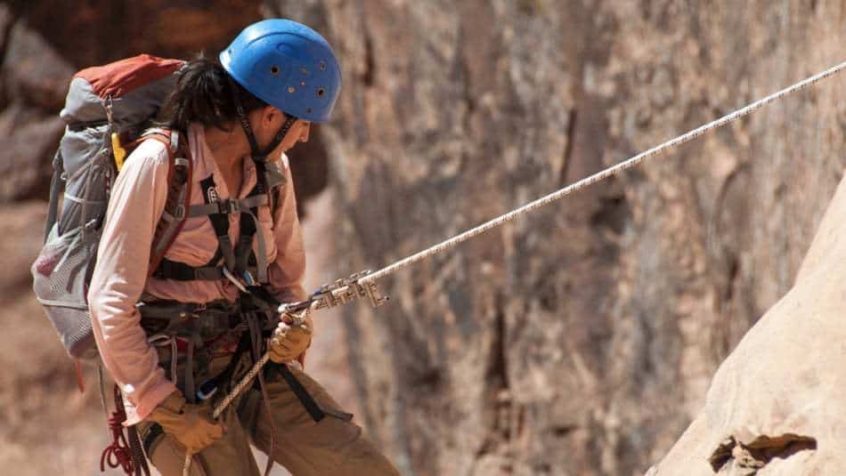
The Ultimate Guide to Rappelling with a Dynamic Rope
Rappelling is a fantastic way to spend a day outside. However, halfway up a cliff face, with burning forearms, shaky legs, and your last piece of protection a little too far away, you begin to question the quality of your equipment. Rappelling gear has never been so strong, light, and durable as it is today, thanks to modern construction techniques, rigorous testing, and strict safety guidelines. But, with such a wide range of options, how do you know which one is the right for you?
Contents
Static vs. Dynamic Ropes
One of the most important things to understand before starting any rappelling or climbing activity is the difference between static and dynamic ropes. Though they may appear identical to the naked eye, having a suitable rope with you in the mountains can be the difference between life and death.
What’s more, a premium-quality dynamic rope for rappelling is ideal and completely safe for activities that involve a lot of movement as it flexes and stretches easily. Although it is required for some common activities such as ice climbing, rock climbing or alpinism, there are certain situations in which static ropes are preferable.
The material that makes up the rope’s inner core is what distinguishes a dynamic rope for rappelling from a static one. The sheath and the core are two parts of every climbing rope. The sheath is a braided outer layer that shields the core from damage. It is often brightly coloured and made of tightly woven nylon fibres. The core, on the other hand, is made up of interwoven polymer fibres that give the rope its tensile strength and allows it to bear weight.
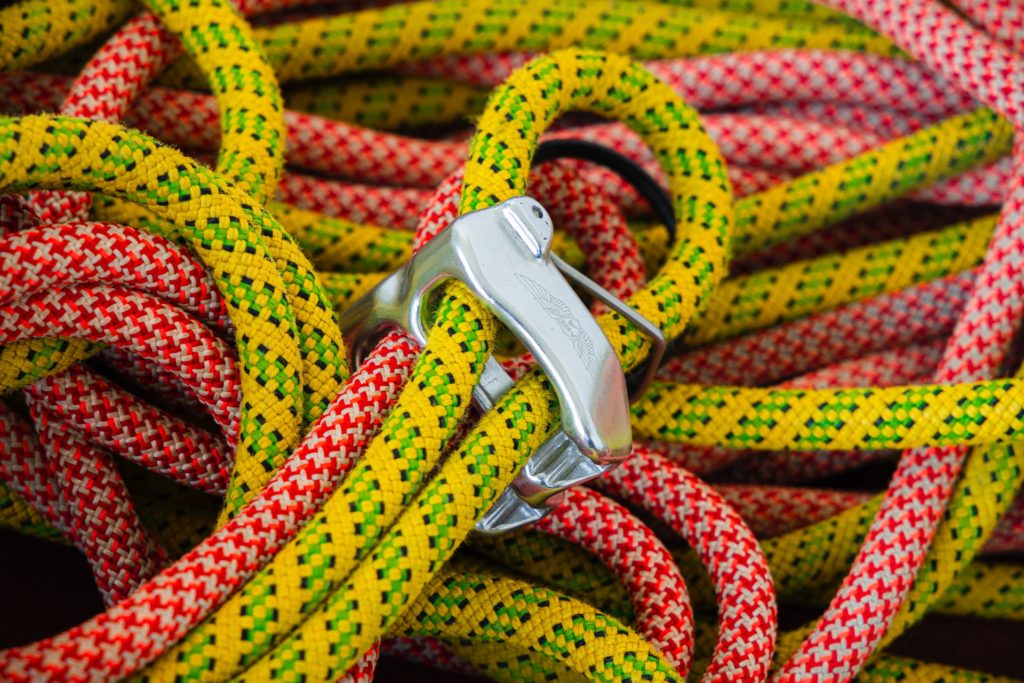
These polymer fibres are woven together in dynamic ropes so that they stretch when they are loaded. This allows the rope to lengthen under tension, reducing the force applied. In climbing terms, if you fall, the rope will stretch out and bring you to a more gradual stop. It’s what allows climbers to survive falls of fifty feet.
On the other hand, static ropes do not have this stretching ability. When a static rope is loaded, the fibres do not stretch, and the rope becomes taut. And, if you take a big fall on a rope that doesn’t stretch, you’ll either put too much force on the rope, causing it to break, or you’ll suddenly stop, which very often results in a severe whiplash and other serious spinal injuries.
Things to Consider before Rappelling with a Dynamic Rope
Wear & Tear
You’ll use a device that creates friction against the rope to slow you down and give you control when rappelling. Some devices accomplish this by repeatedly twisting the rope in opposite directions. Others use small metallic ‘teeth’ to bite into the rope and slow it down. These teeth are perfectly safe to use and can even help you control the rappel. They do, however, accelerate the deterioration of your rope. As previously stated, this becomes more of an issue when purchasing expensive dynamic ropes. If you’re going out for the day and know there won’t be any climbing, it’s probably best to stick with the static rope.

Presence of Water
When ropes get wet, they lose their tensile strength and become dangerous to climb on. However, a dynamic rope of rappelling is perfectly safe to use no matter how much water is absorbed as long as there’s no sudden impact on the rope. However, this does not imply that you should try to dunk your dynamic rope in the water. Getting the rope wet can cause rotting at the core, which reduces the rope’s lifespan. After all, if you plan to go somewhere wet, it might be best to leave your dynamic rope at home.
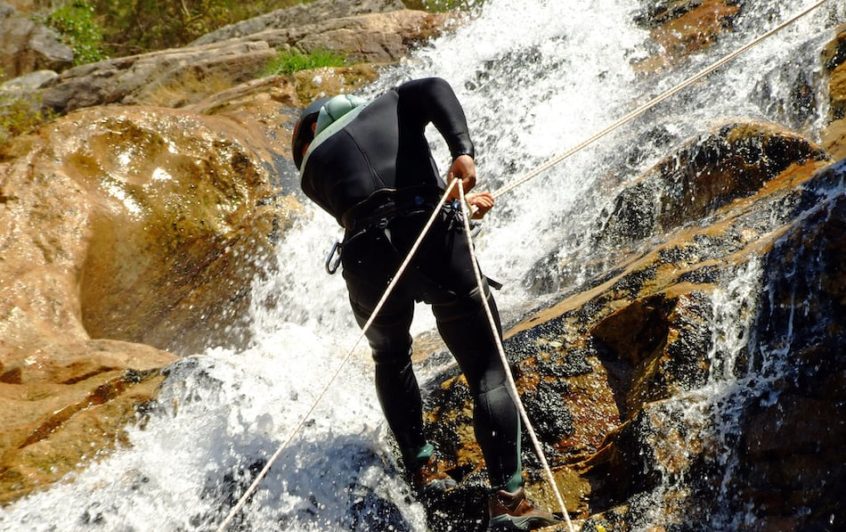
Cost
A dynamic rope is made with far more care and craftsmanship than a static one. Dynamic ropes are therefore more expensive than their static counterparts. Since both types of ropes are sold per metre, you should remember that you will probably need tens of metres of rope and ropes are a piece of equipment that is frequently replaced, so the price difference can quickly add up. While dynamic ropes are useful, they are not always required. If all you intend to do is rappel or go caving, you could save money by purchasing a static rope.
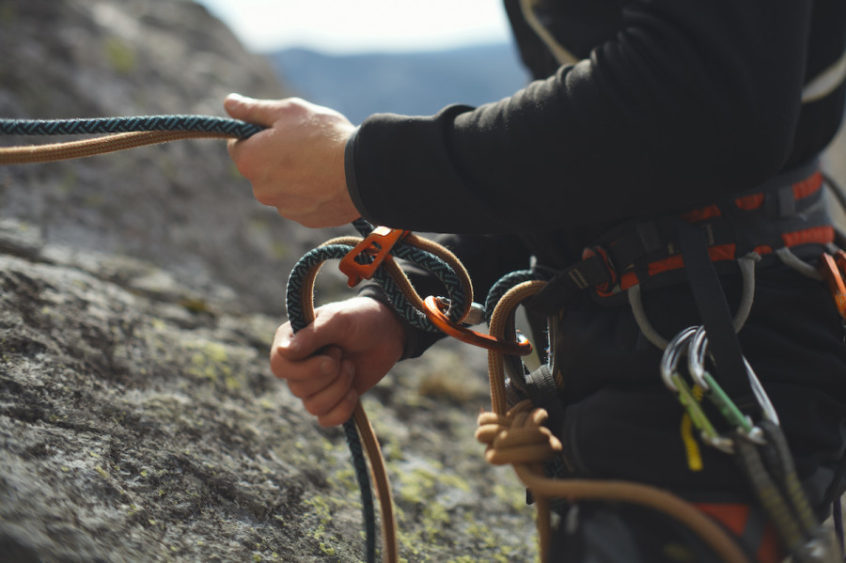
Rappelling with Both
To combine both dynamic and static ropes, you must be confident and understand what you’re doing. Different stretch rates in the two ropes can result in disparities in rappel length, putting your rappel in jeopardy. If you’re going to rappel with both a static and dynamic rope, make sure you follow all of the safety precautions.
UIAA Safety Ratings
The test results for UIAA safety standards are listed on the packaging of dynamic climbing ropes. Looking at these ratings while considering the type of climbing you’ll be doing can assist you in selecting a rope.
Fall Rating
The UIAA puts ropes through their paces to see how many falls they can withstand before breaking. Most climbing falls in the real world are much less powerful than lab falls. As a result, the fall rating is primarily a comparison value. Climbing ropes that meet the UIAA fall rating standard are all safe. A higher fall rating indicates that the rope will last longer than one with a lower rating. However, after a severe fall, inspect your rope carefully and consider retiring it if it’s damaged.
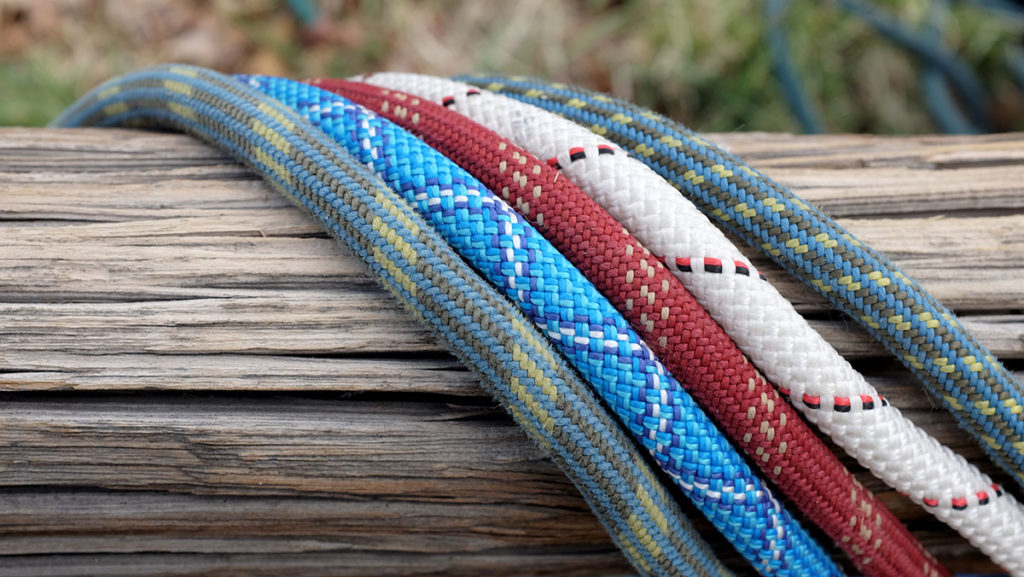
Static & Dynamic Elongation
The amount a dynamic rope stretches with an 80kg weight hanging from it is known as static elongation or working elongation. Elongation on single and twin ropes is limited to 10% of the total rope length, while half ropes are limited to 12%. On the other hand, dynamic elongation is the distance the rope stretches during the first UIAA fall. Higher elongation equals a longer fall, so a lower number is preferable because less stretch may prevent a falling climber from colliding with a ledge or the ground. Less dynamic elongation means a greater impact force on the climber, belayer, and gear. Ropes must not stretch more than 40% of their total length, according to the UIAA.

